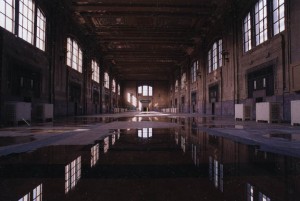By Matthew Reeves
What’s a neighborhood? And more importantly, who gets to decide?
One of my tasks as an intern is to write introductions for a book on historic buildings and structures in Kansas City. We’re revising the first edition of the book, which had its own neighborhood by neighborhood introductions. For the revision several neighborhoods will be condensed into one introduction. For instance, I’ve just submitted a draft introduction for a mega-neighborhood that includes the West Bottoms, the Westside, the Central Business District, and the Northeast.
Each of those areas used to have its own introduction — about 1,000 words — that told the story of the people that settled in the area: who they were, why they came to Kansas City, and in some cases, why the left the neighborhood. In the process of consolidating introductions, I was inevitably forced to cut some material. I dislike editing history because it comes with terrible responsibility.
Neighborhoods are geographically static but sometimes transform dramatically in terms of prestige, population, and ethnic character. Many readers are familiar with the “White Flight” into the suburbs that struck many urban areas in the 1950s and 60s, but might be surprised to learn that such urban shifts have been going on in Kansas City for much longer.
Much of my anxiety results from a desire to share history in a fair and responsible manner.
In that sense, defining neighborhoods is a lot like being a historian. You have to make conscious (and hopefully conscientious) decisions about how to frame any project, which always includes political choices about what to include and what to leave out. That kind of power – to silence by omission – weighs heavy.
Of course, most of the practical issues about what constitutes a physical neighborhood are less complicated than theoretical debates about the ontology and propriety of history. And thankfully, boundary issues have already been decided by the city. But describing and defining neighborhoods still present difficult choices – how to look at issues, how to frame them. Do we celebrate the opulence of the suburbs, or should we lament the loss of tax base and resulting urban decay that accompanied suburbanization?
Does it have to be a zero sum game?


